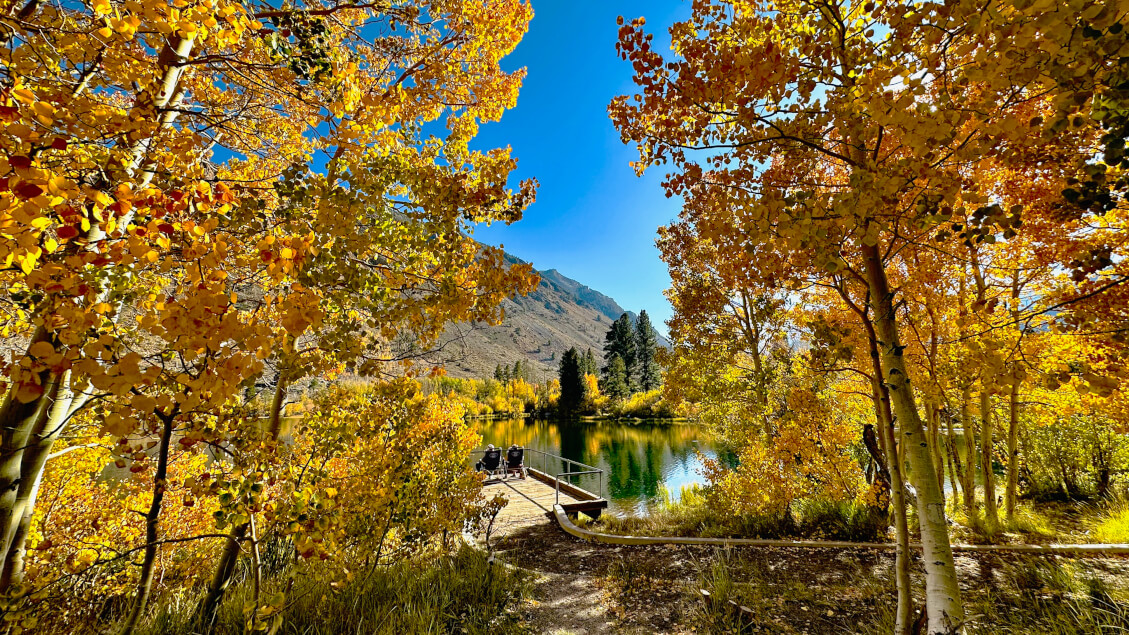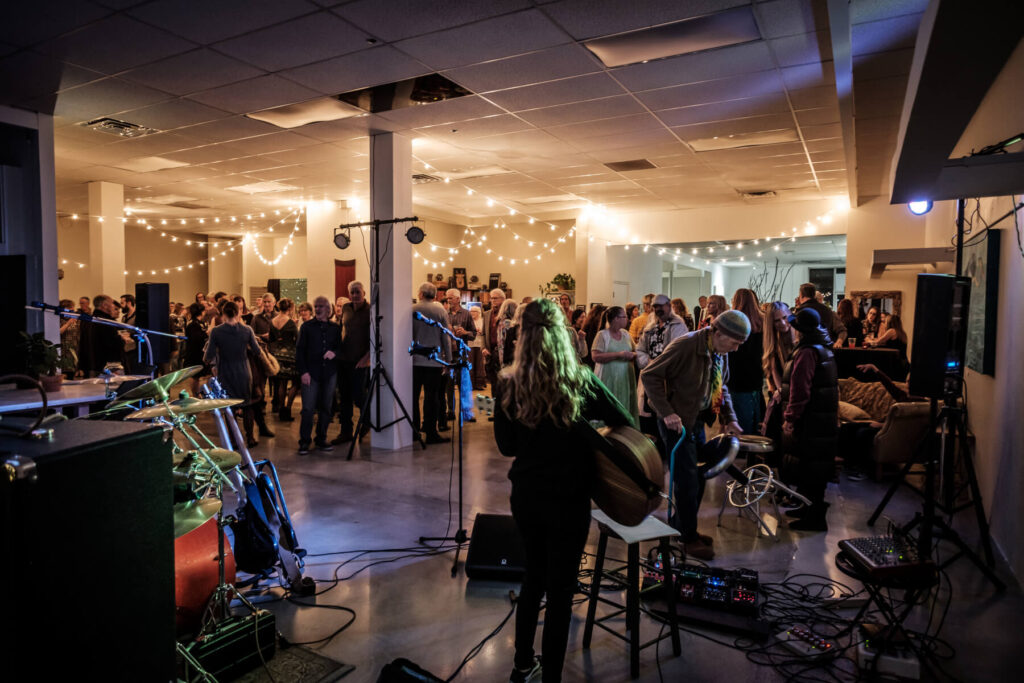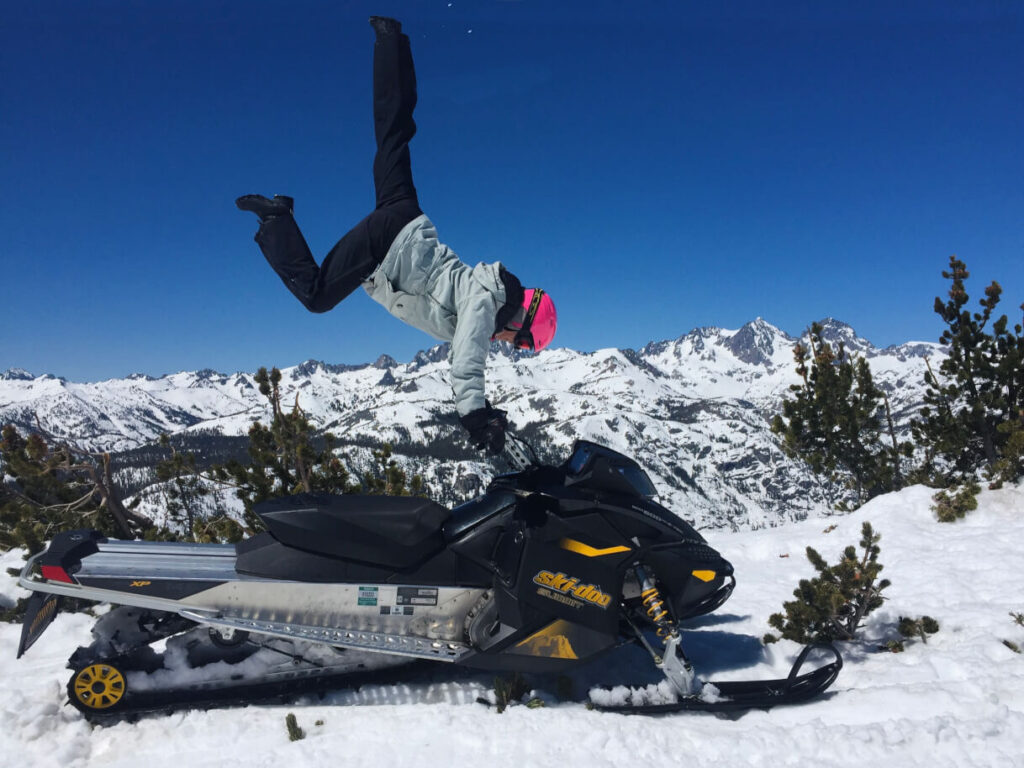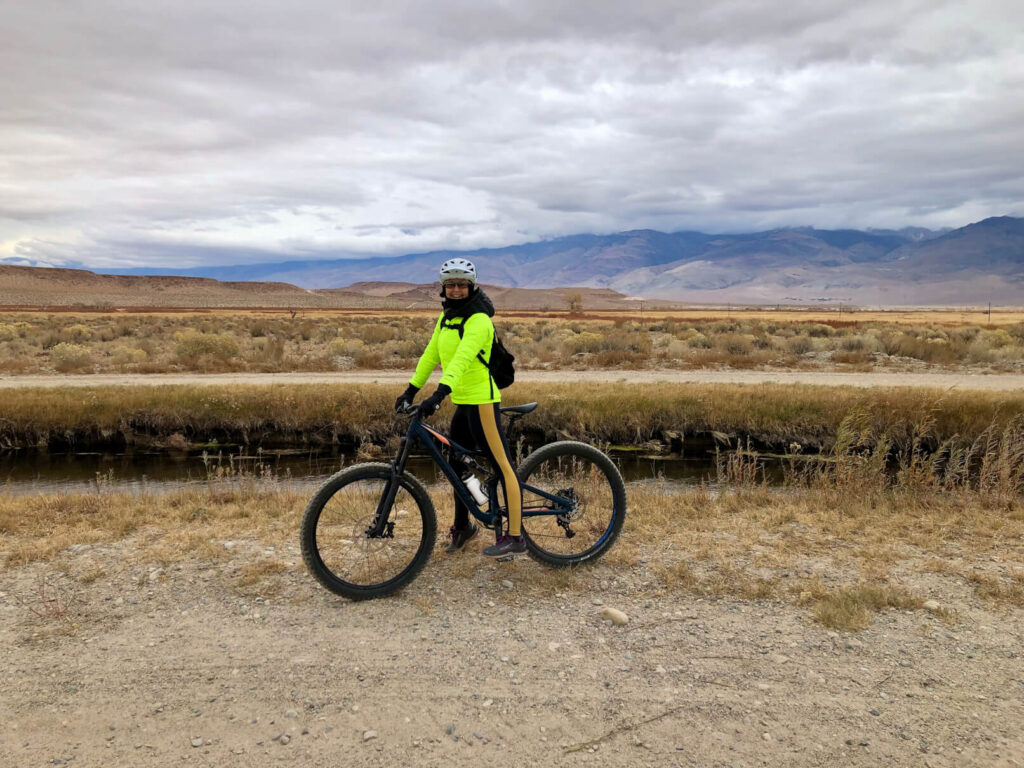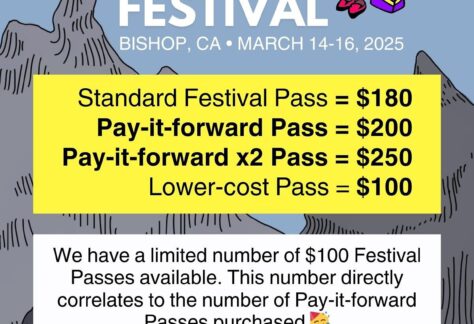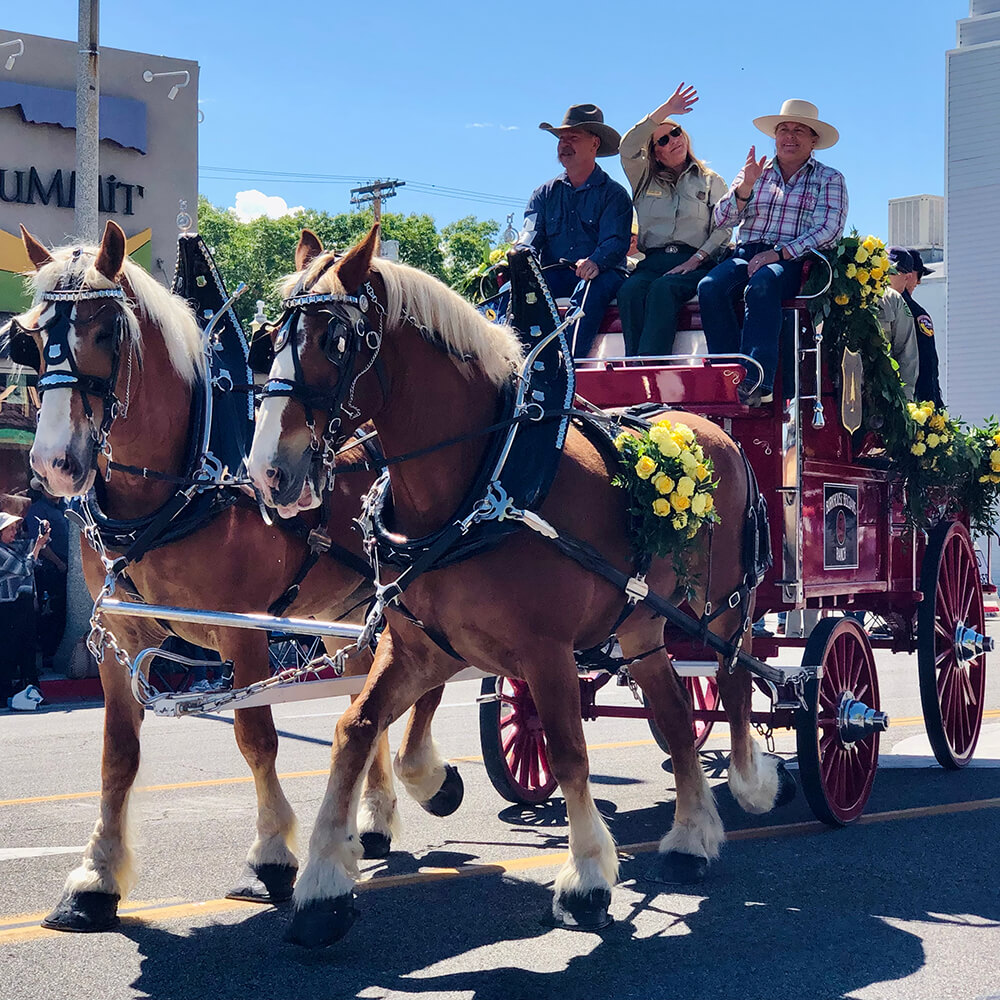An Outdoor Paradise is Accessible
The Eastern Sierra is known as an outdoor paradise. It is accessible.
“We believe the freedom and exhilaration of outdoor challenges changes lives. No one should be left behind simply because of a disability!”
Disabled Sports Eastern Sierra.
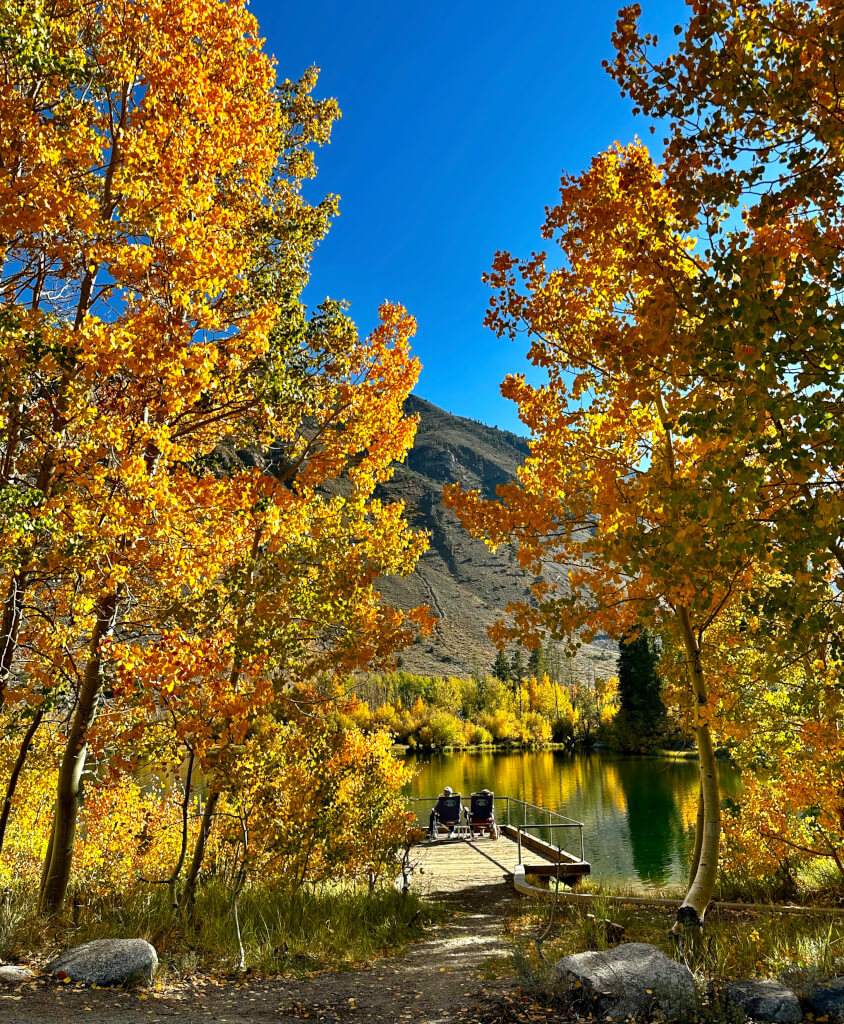
Anglers come to fish the crystal clear streams and beautiful lakes. Hikers walk the awe-inspiring trails of the magnificent mountain ranges and foothills of the region. Cyclists ride the rugged mountain bike trails and the quiet roads of the hills and valleys. Climbers ascend sheer rock faces and surmount the giant boulders strewn across this landscape. Snow sports bring families together for wonderful winter fun and summer offers swimming, kayaking and stand-up paddle boarding on the many bodies of water.
The Eastside is a place of limitless beauty. Sunsets and sunrises are spectacular and the night sky is a splendid sight to behold. The mountains are majestic and the oldest living organisms on the planet live here. The many museums and interpretive centers provide a window to the natural and human history that shaped the land as we see it today.
There is so much to see and do, and so many opportunities exist for persons with disabilities to participate fully in these activities. Through partnerships and programs by various agencies, municipalities, and businesses there are paved trails, ramps, piers, and services that provide accessibility to folks who are confined to wheelchairs or require adaptive gear and / or assistance to get around.
Note: Many activities and services are only available or offered seasonally. Please make sure to check websites or call ahead to plan your trip and know what you might encounter during your visit to the Eastern Sierra.
Making Lakes & Fishing Accessible
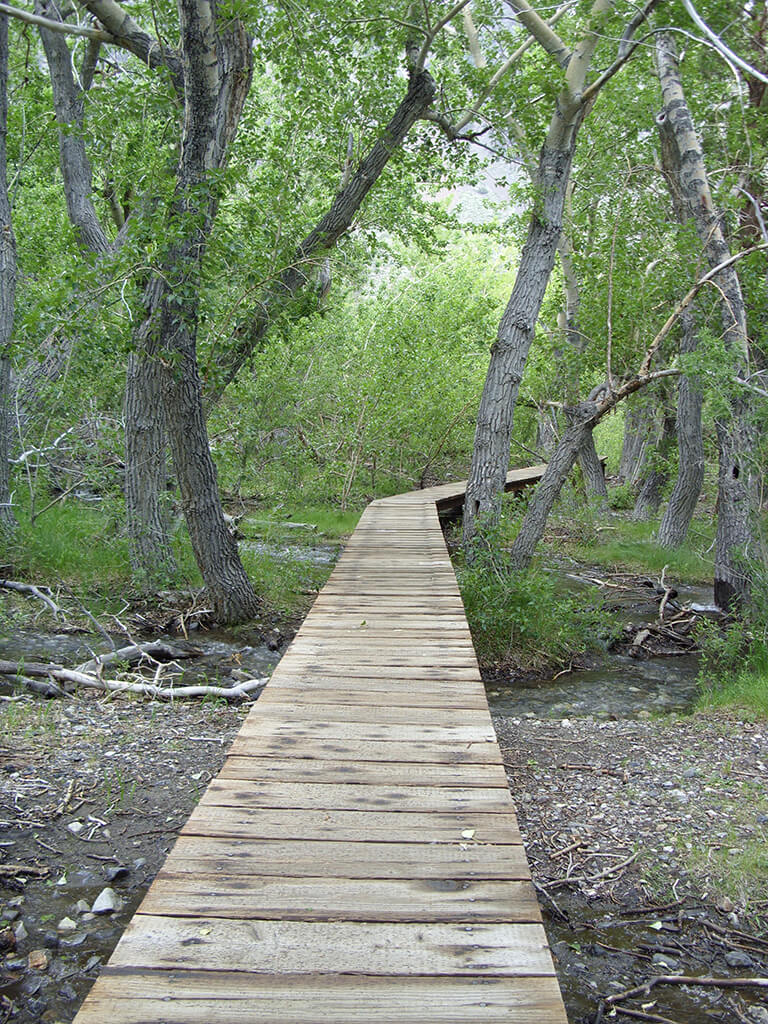
Specially designed accessible piers for fishing are located at some lakes and ponds in the Owens Valley and Bishop Creek Canyon. Fishing is legal all year in the Owens River and the well-maintained Rawson and Buckley Ponds that lie on the canals alongside the river near Bishop have access for the physically disabled to be at the water’s edge to fish or just enjoy the view.
Another such pier is built on the shores of Intake II, a small lake situated at just over 8,000-feet above sea level, in the heart of Bishop Creek Canyon. This reservoir is regularly stocked with fish during the fishing season (last Saturday in April to November 15th) and is a favorite fishing area with easy access.
Convict Lake, located 10-miles south of Mammoth Lakes on US Highway 395, is highly regarded as a premier fishing destination in the Eastern Sierra. Fish planting at the lake is done weekly by the California Department of Fish and Wildlife (CDFW) and supplemented by the owners of Convict Lake Resort during fishing season.
A loop trail around the lake has a paved section along the eastern side of the lakeshore that provides magnificent views of the lake, towering mountains, and forests in this glacial valley. A wheelchair accessible fishing pier is built over the water on this lakeshore too. Fall is one of the most beautiful times of year for a stroll along this path to witness the changing colors of the leaves. Six of the cabins and houses at the resort, which is nestled in the groves of Aspen nearby, are handicap accessible.
In the magnificent alpine scenery of the June Lake Loop is the sparkling clear June Lake. It is a natural lake set in a beautiful horseshoe shaped valley created by the glacial action that defines the topography of this region. The rugged peaks rise dramatically from the shores of the lake and the changing colors of the seasons adds to the magic of the scene.
A summertime swim or float adventure, atop a kayak or stand-up-paddleboard, is freeing and refreshing. The Dick Noles Accessible Pathway makes access to the lakeshore along the sandy beach possible and safe by wheelchair or other adaptive gear. A number of generous donors and organizations in the area made the installation of this pathway in 2016 possible.
Many Trails & Parks are Accessible
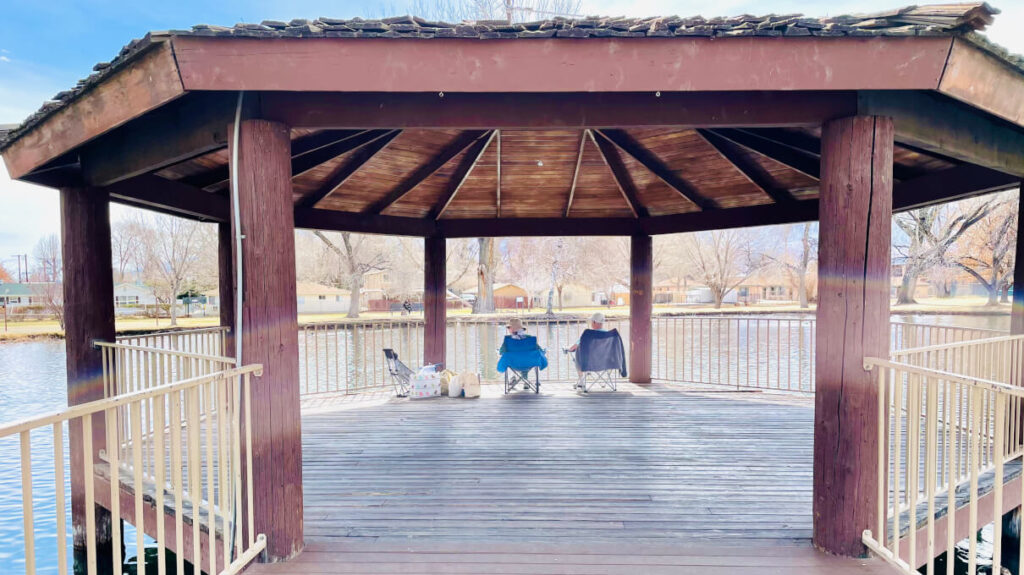
The Mammoth Lakes Trail System offers many miles of paved pathways through and around the town of Mammoth Lakes and adjacent parks and forests. The hub of the entire trail system, which comprises some 300-miles of trails that vary in surface type and usage, is the Town Loop. This 7.3-mile paved trail provides a family-friendly, wheelchair accessible tour of this lovely mountain town. It offers access to other outbound trails, many of which are also paved.
One such paved outbound trail is the 0.8-mile Shady Rest Path. It is one of the most popular paths in the system with connections to the Old Shady Rest and New Shady Rest campgrounds as well as the Mammoth Lakes Welcome Center. It meanders gently downhill through a forest of red fir and Jeffrey pine to the ball fields, playground and picnic area at Shady Rest Town Park.
A longer and steeper paved trail of 5.3-miles is the Lakes Basin Path. It connects the North Village to Horseshoe Lake and one mile of the path is relatively flat as it runs alongside Lake Mary to terminate at Horseshoe Lake.
A steep, but short paved trail of 0.2-miles descends 100-feet down to the hot springs and boiling pools of the Hot Creek Geological Site. This is a fascinating natural feature where one can see geology in action. Boiling water bubbles up from the creek bed, fumaroles let off steam, and periodic geyser eruptions can create new hot springs overnight. The area is a stark reminder that a chamber of hot magma lies a mere three miles below the surface of the earth here. The main parking area on the rim of the canyon is accessed by road from US Highway 395 near the Mammoth Lakes airport. When visiting this site follow all signage and stay within fenced areas to avoid unstable ground. Swimming and bathing are not allowed and the area is closed from sunset to sunrise.
Bishop City Park comprises 44-acres of parkland where the city maintains a swimming pool (open from Memorial Day to Labor Day), baseball fields, tennis courts, a skate park and bike park, an off-leash dog park, picnic tables and picnic pavilion, a beautiful pond and over-water gazebo, children’s play structures, outdoor fitness center and bocce court. A paved path meanders under shade trees, alongside a burbling stream, around the pond and out onto the gazebo on the pond. See the fish swimming in the clear waters below and watch the ducks and colorful birds on and around the pond. The city park is the heart of Bishop with easy access on safe sidewalks to shops, restaurants and entertainment facilities – many of which have access for the handicapped.
Accessible Sight Seeing
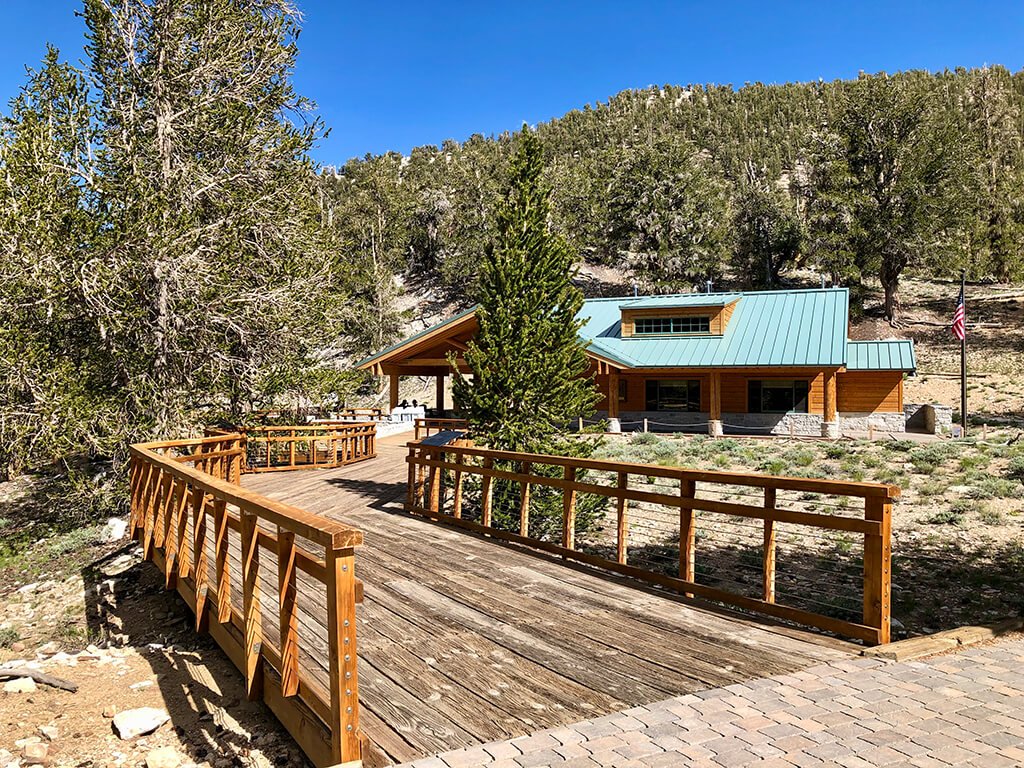
Take a trip to what feels and looks like the top of the world. The Mammoth Mountain Scenic Gondola delivers panoramic views of the Sierra and White Mountains, Minarets, Mono Lake, Yosemite peaks and the town and valley below. At 11,053-ft. discover the history and wonder of the Sierra at the Eleven53 interpretive center with fun, interactive exhibits for all ages. Enjoy lunch with a view at the Eleven53 café. Check Mammoth Mountain lift hours of operation weather status here.
High above the Owens Valley in the White Mountains are the world’s oldest living non-clonal organisms, the Great Basin Bristlecone Pine (Pinus longaeva). Growing between 9,800- and 11,000-feet in an all but inhospitable climate these trees live for thousands of years. A beautiful drive from Big Pine, about 25-miles taking about 45-minutes, on a paved, winding, mountain road gets you to the Schulman Grove Visitor Center. This interpretive center, open annually from approximately mid-May to November, weather permitting, has a large patio with picnic tables and boardwalks around the center from which many of the old trees can be seen. The center houses many exhibits, a bookstore and gift shop, and screens excellent video presentations regularly. In the summer months rangers and staff give talks and lectures about these remarkable trees.
Disabled Sports Eastern Sierra: Accessible advocacy, support, training
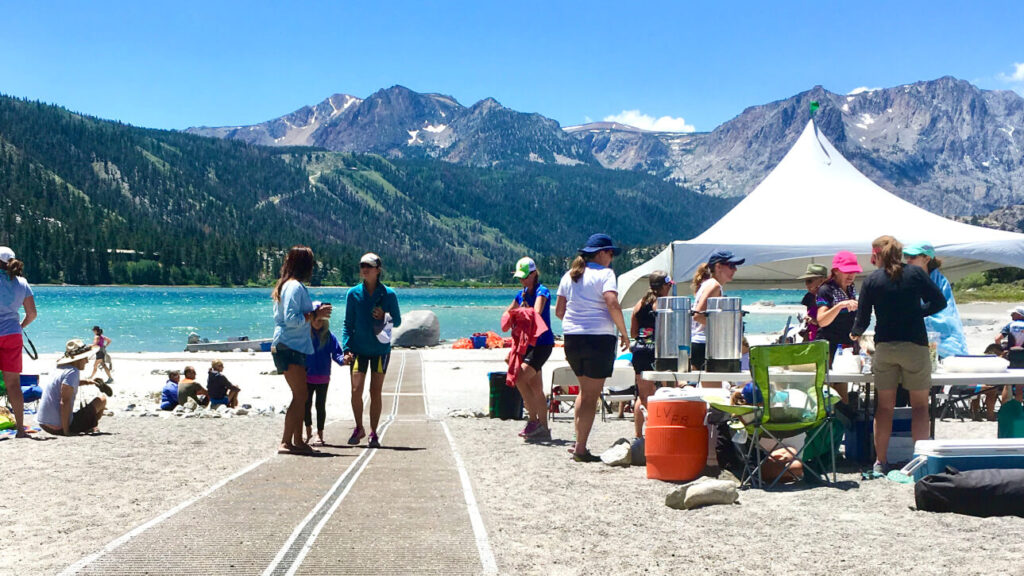
Near the beginning of this story is a quote from Disabled Sports Eastern Sierra (DSES). It’s more than just a saying. It is the guiding principle of the organization, and the wholehearted belief, by all who live and play here, that nature is restorative and regenerative and should be accessible to all.
DSES is a non-profit organization that has been in operation in Mammoth Lakes since 2003. In the 20‑years that DSES has been serving the community in the greater Eastern Sierra it has grown from an adaptive ski program in winter into a year-round adaptive sporting organization. It now delivers over 3,000 annual adaptive therapeutic recreation lessons in a wide range of winter and summer activities. The sporting lineup includes skiing, snowboarding, rock-climbing, road cycling, mountain biking, fishing, kayaking, stand-up paddle boarding, horseback riding, hiking and camping.
A small paid staff manages the day-to-day operations of the program. Over 250 volunteers contribute over 20,000 hours annually to conduct lessons and guide participants in sporting and outdoor activities. Volunteers are required to have intermediate to high-level skills and undergo a rigorous training program prior to coaching or assisting students of DSES. Many volunteers hold top-level certifications in a variety of outdoor sports.
For many years DSES has been at the forefront of offering programs to active duty and veteran athletes with disabilities with great success. In 2007 the organization began an ambitious project to build the National Wounded Warrior Center in Mammoth Lakes. Recently the DSES Board of Directors announced the acquisition of a large property in Mammoth Lakes. It is in the process of being developed into a facility for its programs for military and veteran athletes, and will provide retreat-style adaptive sports programs year-round. The center has been named The Jack & Kathy Copeland Center at Fern Creek Lodge.
Disabled Sports Eastern Sierra is a Paralympic Sports Club and chapter member of Disabled Sports USA. Visit or call the folks at DSES. It could change your life.
Museums & Visitor Centers are all Accessible
Throughout the Eastern Sierra from Lone Pine to Lee Vining there are numerous museums and visitor centers that present historic and culturally significant aspects of the region. Each is unique in its subject(s) of interest and a road trip along US Highway 395, with visits to each of these museums and centers could yield many, many hours of interesting and informative learning. All have suitable wheelchair access and many have accessible technologies for hearing- and vision-impaired guests.
Stop in at any of these wonderful places as you find your accessible Eastern Sierra Experience. The friendly, knowledgeable staff can tell you more about local attractions, give you maps and directions, and provide current information on weather and possible road closures.
Read about the Museums & Information Centers in the Eastern Sierra in this related blog story.

